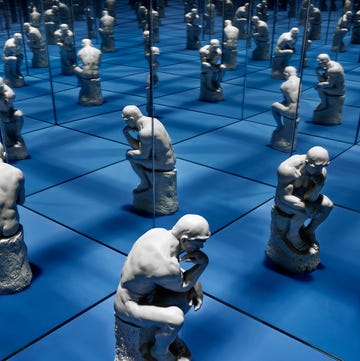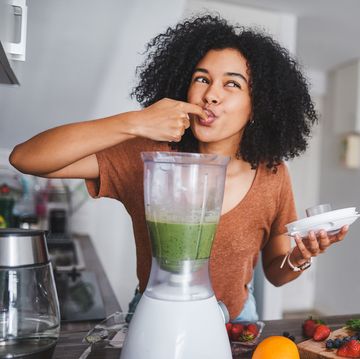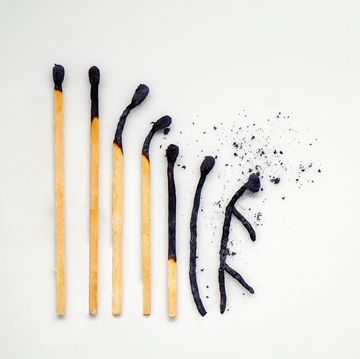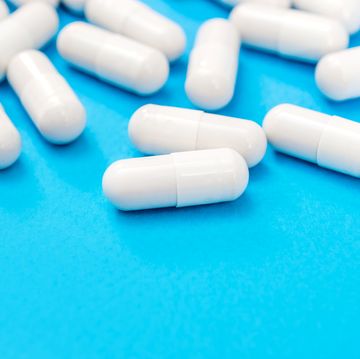Cheeks in bloom? Don't feel silly. Research suggests blushing can be a sign you're trustworthy. In fact, some experts say blushing might have evolved as a way to signal to strangers that your emotions are genuine. Of course, that's not much consolation when you're red-faced in a work meeting or blushing in front of a potential romantic partner. Here's how to avoid that flush from taking over your face. (Balance your hormones and lose weight with The Hormone Reset Diet!)
Strike a pose.
Blushes are triggered by emotions—usually embarrassment. But in order to feel embarrassed, you have to feel vulnerable. That's why you're unlikely to blush at home around your loved ones—even if you do something super-boneheaded. But if you're in a room full of colleagues or strangers, the smallest slip-up can cause a deep flush. To combat this feeling of vulnerability, research shows standing for a few seconds with your feet apart and fists on your hips (Wonder Woman pose) or over your head (hooray pose) can pump up your confidence and banish those vulnerable feelings. Just might want to try this one in private, of course.
Be gentle with your skin.
Stay away from aggressive anti-agers and glycolic skin peels. Those can aggravate sensitive skin and exacerbate blushes.
Hands off hot stuff.
If you're prone to blushing and have an important event—or date—coming up, avoid hot beverages, alcohol, and anything spicy. All of these trigger the release of a body chemical called histamine, which can cause or exacerbate flushing. On the other hand, if you think a blush is a foregone conclusion, a first date over spicy food could help disguise your flush while you and your date get to know each other. Thai, anyone?
MORE: 5 Signs You're Not Getting Enough Vitamin D
Take a cool approach.
Before a date or event, apply a washcloth soaked in cold water to your face for 10 minutes. The cool compress constricts blood vessels.
Go green.
Follow that cold compress with a lotion that has a greenish tint. "Green cancels out redness because it's on the opposite end of the color spectrum," says Elizabeth Briden, MD, an adjunct associate professor of dermatology at the University of Minnesota.













